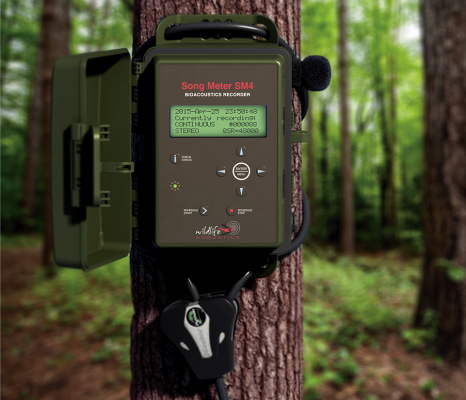Sampling
Placing clickable pins on a map seems like a good start : at some given spot on the map, I start playing a sound that was recorded there on the field.
The capture took place in the summer. A second pin could allow us to compare it to the way the sound travels in the winter, i. e. in different weather conditions.
This morning (Saturday), the horn heard from home is particularly expressive. Is this due to the driver’s mood ? To the week-end ?
In order to give a full account of the variability of the horn, one would have to exhaustively document every item at every point along the given section (some fifteen kilometres). I don’t possess the required technology. The dummy-heads and recording devices are too easily damaged to be left in situ for a year and too expensive to have thirty of them scattered throughout the area. Not to mention electrical power. Is one year a sufficient cycle ? As for using lower audio quality solutions (which exist), I have no desire to do so : it’s a different job altogether.
It might be possible to shelter a system inside a house close enough to the railway (in the attic for instance) and sample this particular spot over a year. Who wants to host a sharp listening dummy-head for a year ?
Current approaches to acoustic environment analysis can anonymize such events : the considered information doesn’t allow signal reproduction. For instance, the observation system delivers relevant data based on frequency analysis or amplitude. If the system is monitoring the acoustic activity of an office, you may just want to know if someone is speaking (not to record what is being said). Again, this is a different job. Mine is to look at the sensation, transmission (delayed or not) of the sensation.
But of course, embarking on a dense sampling we could end up lost in an infinite network. Why just record the train’s horn by the rails ? This is not where my daily experience of it comes from.
Being able to compute the effect of a number of parameters is probably the advantage of simulation systems over recording.
Machine, let me hear the six-thirty-five p.m.’s horn variations within a 4,3 km radius from Runelec, at the end of november next year, if it’s Rémy driving the railcar and if a match is scheduled for the next saturday at the Guingamp stadium (when Rémy’s more of the cycling type, as opposed to his brother)…
To be continued …
To know more :
- an article of Transport Rail on the Guingamp-Paimpol line (in french)
- and, off course, the hours
Records & photos Pascal Rueff
Production L’Agence du Verbe © 2016
